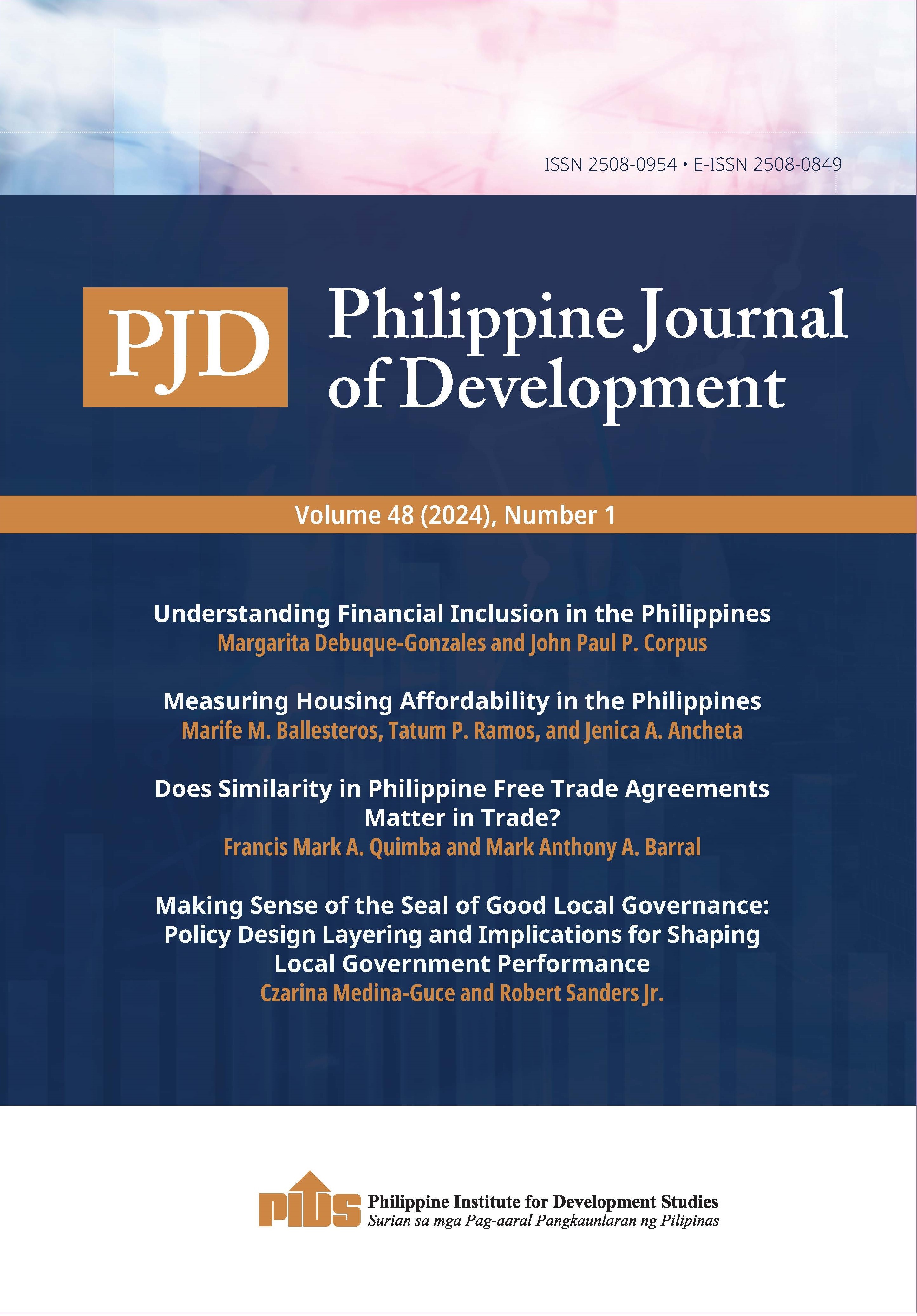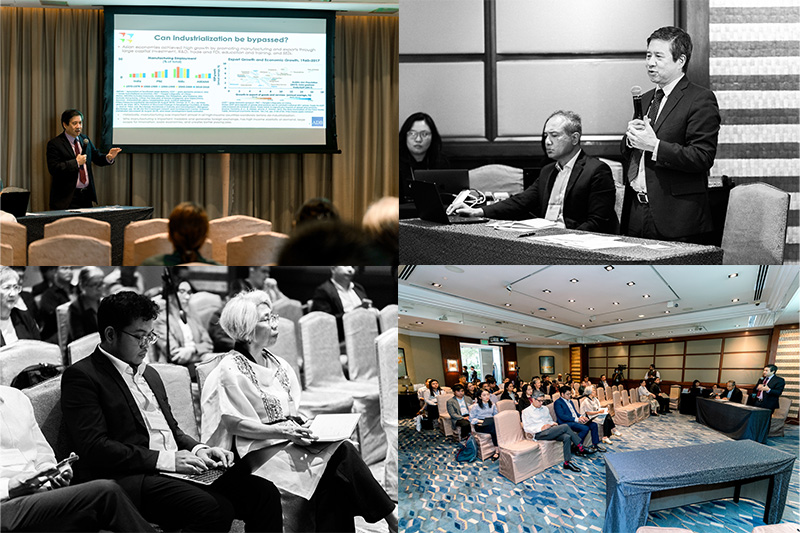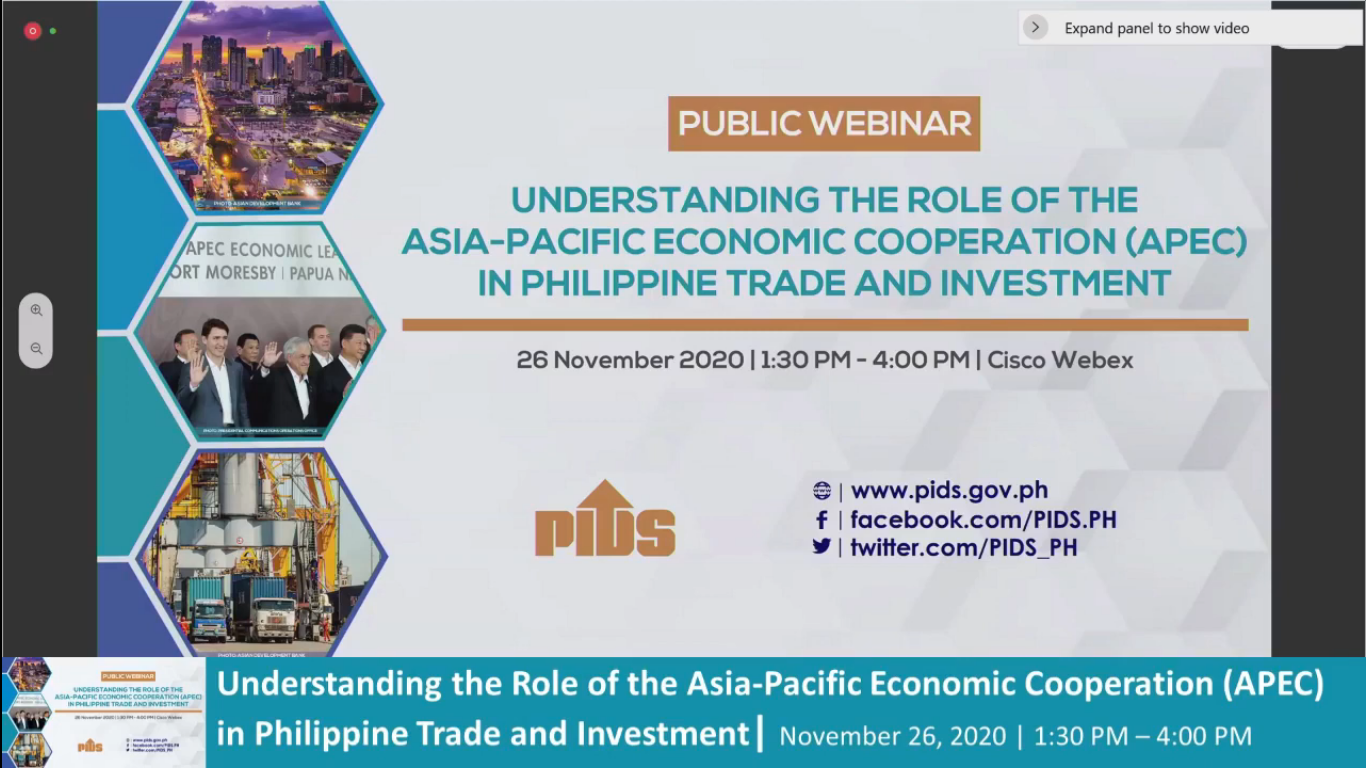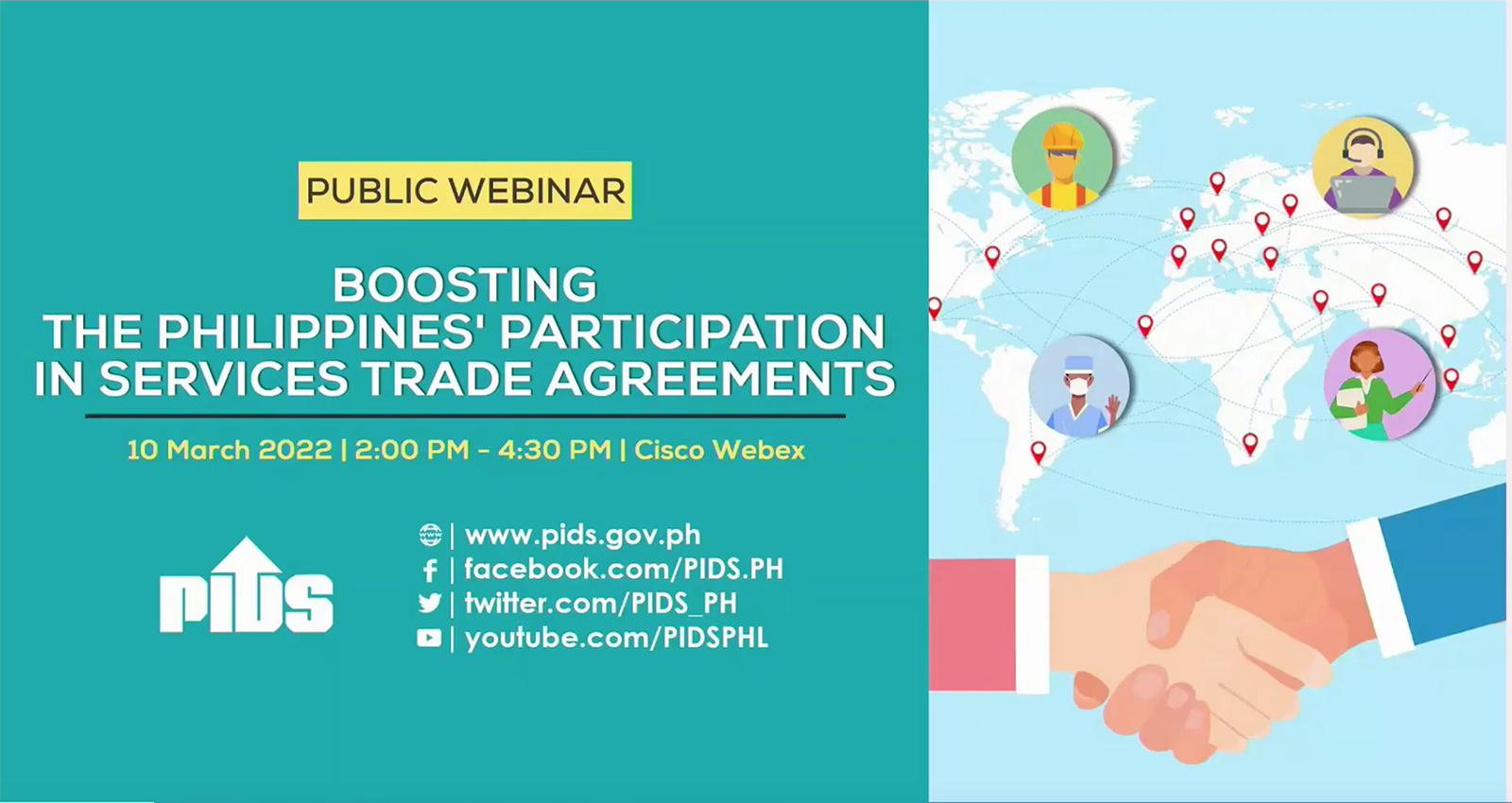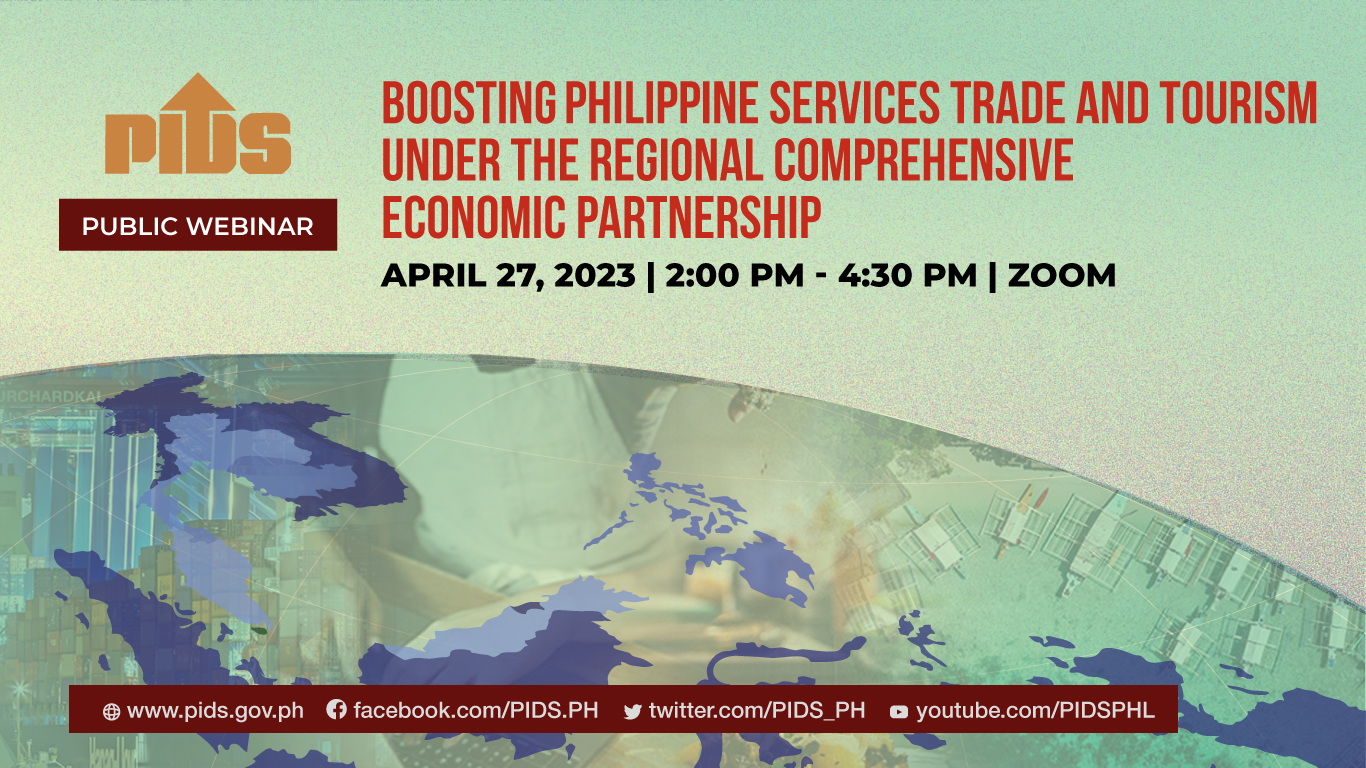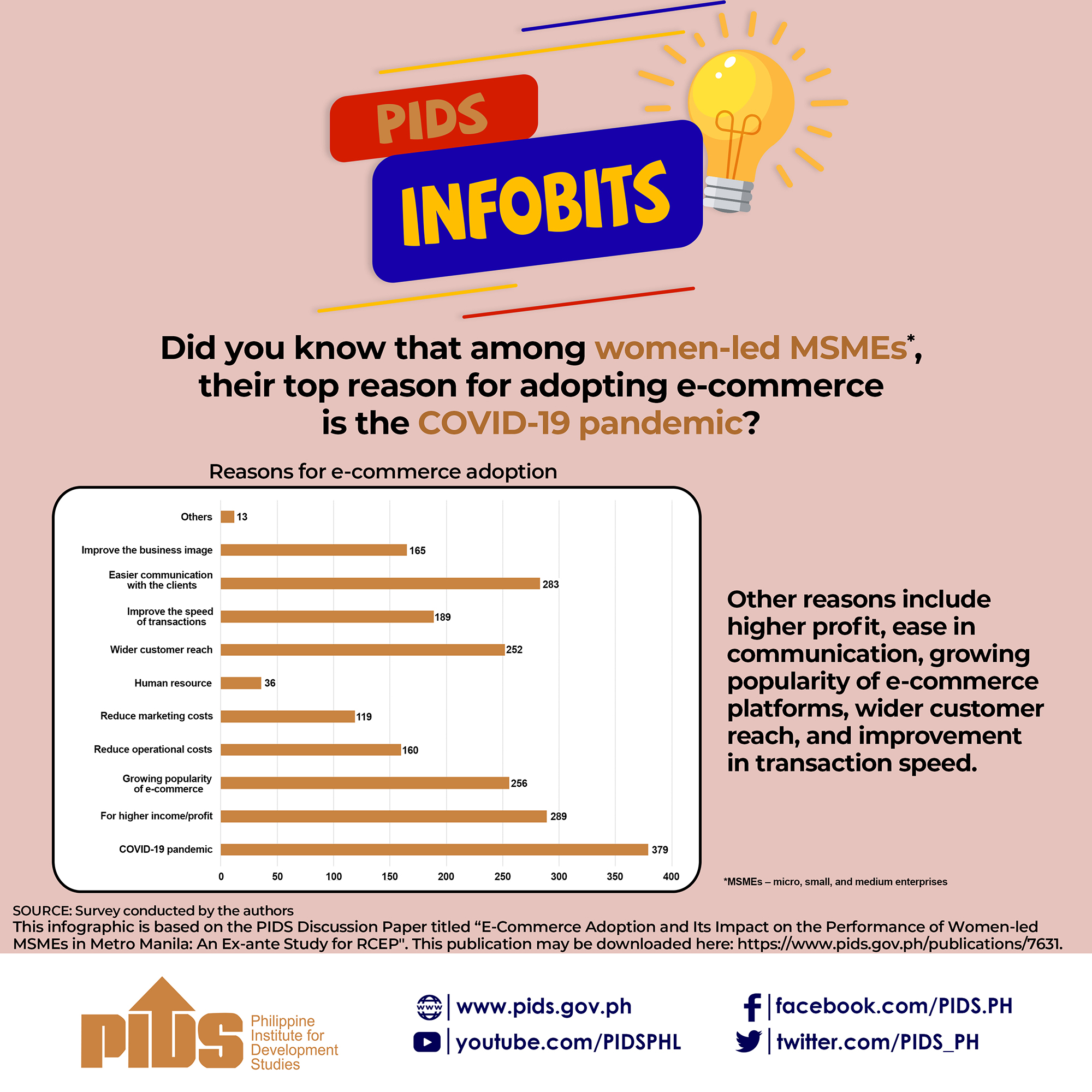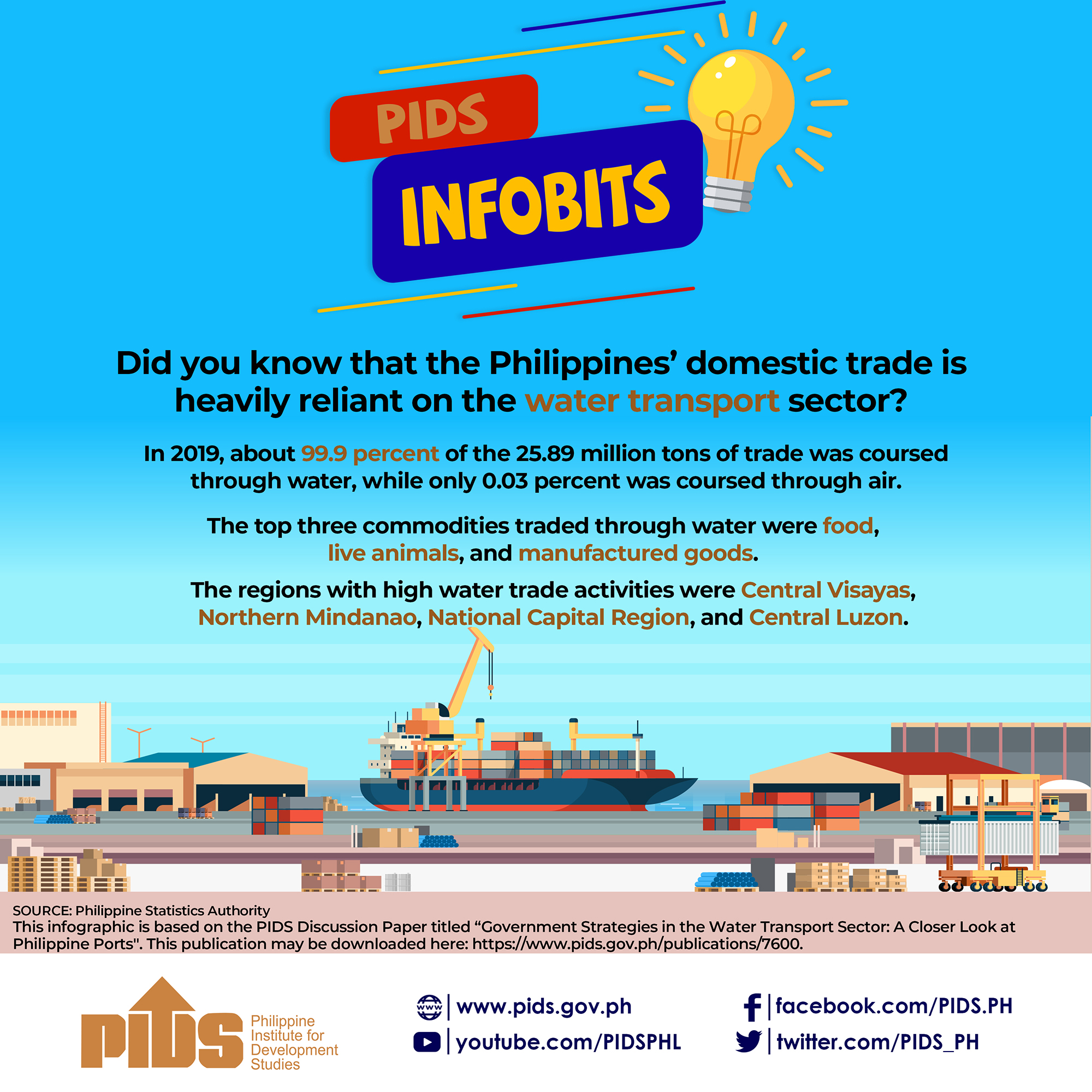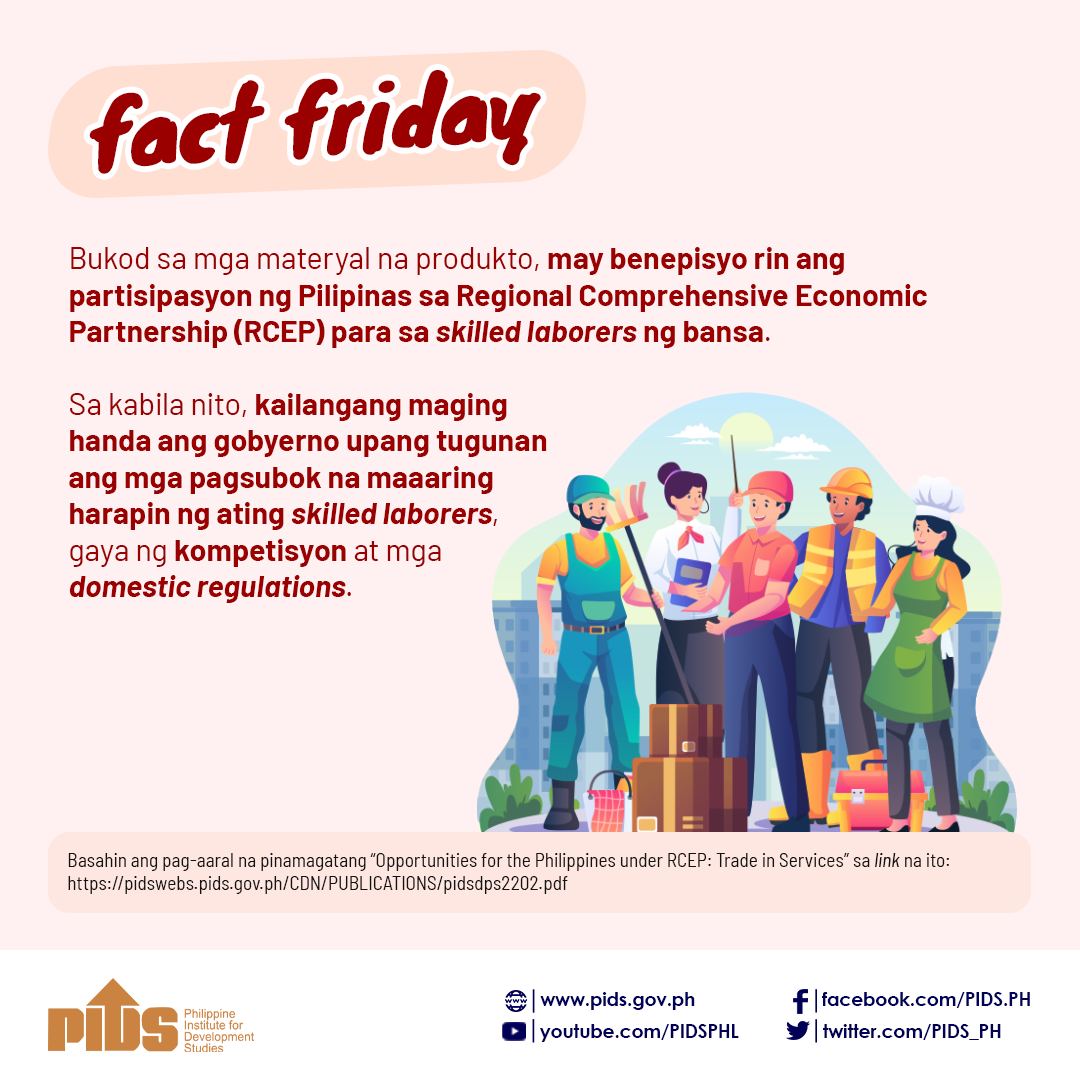There will be pain before gain for the Philippines under in free trade among the Association of Southeast Asian and six non-Asean countries, specifically Australia, China, Japan, South Korea, New Zealand and India.
Government think tank, Philippine Institute for Development Studies (PIDS) said a simulation study it did on the free area (Regional Comprehensive Economic Partnership (RCEP)) trade showed the Philippines will initially be a loser.
However exports will improve over time. "In 2018, Philippine exports within the RCEP will improve by two percent relative to the baseline. In 2023, they are expected to increase by 3.8 percent,” the study, authored by PIDS consultant Caesar Cororaton, said.
"All of these effects will translate to higher Philippine real GDP growth of three percent in 2023, and will generate additional welfare of $3 billion,” it added.
RCEP, it said can have a positive impact on the economy, as its trade-creation effects will ultimately increase Philippine exports within the region.
PIDS said the economies covered in the RCEP have a total gross domestic product of $21 trillion in 2013 and a population of 3.4 billion.
The PIDS policy note — Will the Philippines benefit from the RCEP? — examines the potential effects of the reduction in RCEP tariffs and non-tariff barriers on the Philippine economy using mathematical modeling.
RCEP negotiations were launched by the leaders of the 16 participating economies in the margins of the East Asia Summit on November 20, 2012.
They announced that the RCEP would be "a modern, comprehensive, high-quality, and mutually beneficial economic partnership agreement establishing an open trade and investment environment in the region to facilitate the expansion of regional trade and investment and contribute to global
economic growth and development.”
However, the PIDS paper said trade barriers continue to exist within the RCEP despite the progress achieved over the past three decades in reducing tariffs on international trade under the World Trade Organization and, subsequently, in the context of regional and bilateral preferential trade agreements.
The policy note said the higher export growth and the improvement in foreign investments will generate a chain of positive effects domestically such as higher wages to both skilled and unskilled labor, lower prices due to the reduction in trade barriers, higher household income and lower poverty incidence.
"FTA usually facilitates the inflow of foreign investment. The simulation considers only minimal investment inflows of $2.5 billion over a 10-year period. The gain can potentially be higher because the Philippine
economy has a large absorptive capacity for foreign capital,” the study stated.
The policy note said the inflow of foreign direct investment may be enhanced with improvements in infrastructure.
"Significant amounts of investment are needed to improve its sorry state, which affect the country’s bid to sustain its present growth trajectory,” the paper said.
"Moreover, significant reforms in investment and corporate taxation are required to make the Philippines an attractive destination for foreign investments,” it added.
The policy note said at present, corporate taxes are high relative to those in other countries in the region. In this area, the RCEP could help stimulate beneficial reforms in domestic policies.//


